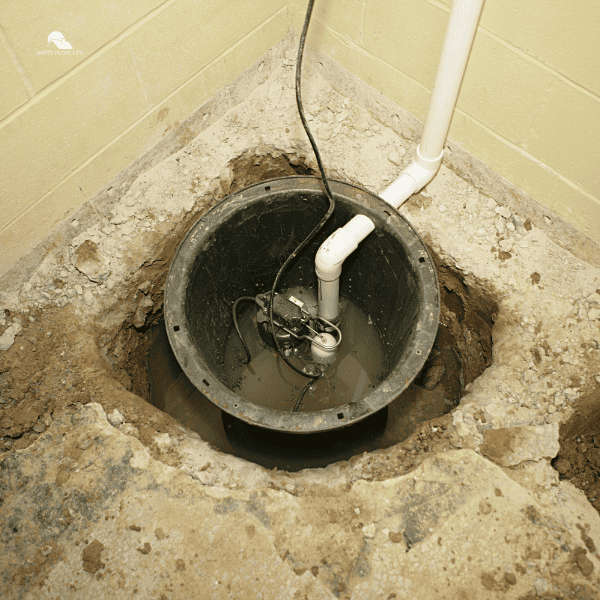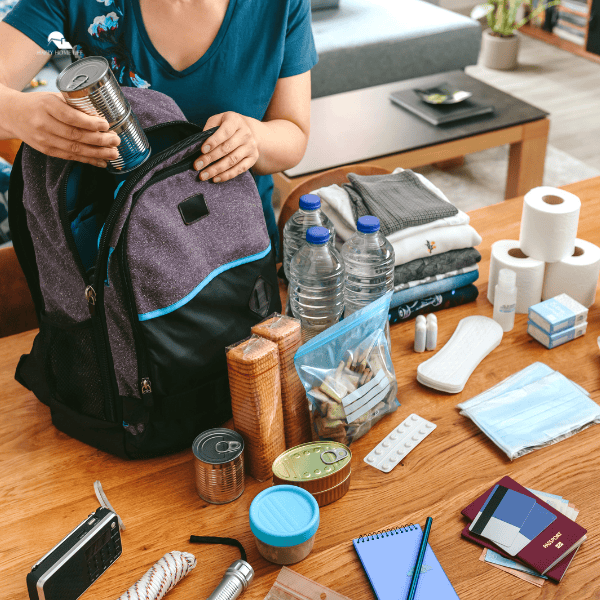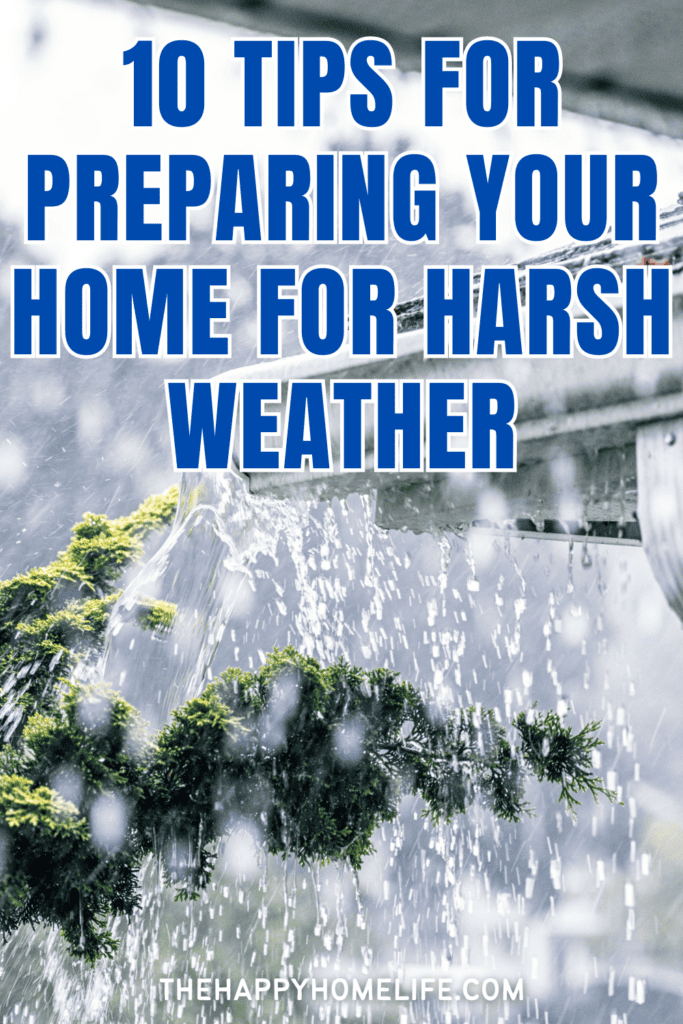As the seasons shift, the importance of preparing your home for harsh weather comes sharply into focus. Whether it’s the intense heat of summer, the relentless rains of spring, or the biting cold of winter, each season brings its own set of challenges that can test the resilience of any home.
It’s not just about enduring the elements but ensuring your home remains a sanctuary of comfort and safety, regardless of what the weather outside might bring. From safeguarding the structure of your home to enhancing its energy efficiency, the steps you take today can prevent costly repairs and discomfort tomorrow.

- Seal Windows and Doors
Windows and doors are critical points where your home’s interior can be exposed to the harsh external environment. Over time, seals can wear, leading to drafts and moisture intrusion. By applying or replacing weather stripping and caulking around these openings, you can enhance your home’s ability to keep the cold or heat out, depending on the season. This not only improves your home’s energy efficiency but also contributes to a more comfortable living space.
- Inspect Your Roof
Your roof acts as the first line of defense against the elements, making its integrity crucial. A damaged roof can lead to leaks, energy loss, and significant damage to your home’s interior. Regular inspection for missing, damaged, or loose shingles and tiles can help you catch and address potential problems early. Paying attention to the condition of your roof not only prevents water damage but also ensures your home remains insulated and protected against varying temperatures.
Additionally, gutters play a pivotal role in directing rainwater away from your home’s foundation and preventing water damage. When gutters become clogged with debris, they can overflow, causing water to seep into your home’s walls and foundation. Ensuring your gutters are clean and securely attached is a simple yet effective way to protect your home during heavy rains. This preventative measure safeguards against water damage and the potential for mold and mildew growth.
- Trim Trees and Secure Outdoor Items
Overhanging branches and unsecured outdoor items can become significant hazards during storms. Trimming trees around your home reduces the risk of branches falling and causing damage to your roof or windows. Similarly, securing or storing outdoor furniture, decorations, and any loose items can prevent them from being picked up by strong winds and turned into projectiles. These steps not only protect your property but also the safety of your home and neighborhood.

- Check Sump Pump
For homes equipped with a sump pump, ensuring its proper function is crucial in preventing basement flooding during heavy downpours. Regular testing and maintenance of your sump pump can give you peace of mind knowing that your home is prepared to handle excess water. This is especially important in areas prone to heavy rains or where homes are situated in lower-lying areas, where water accumulation can be a persistent issue.
- Inspect Your Insulation
Proper insulation is key to maintaining a comfortable temperature inside your home, regardless of the weather outside. Inspecting the insulation in your attic, walls, and around pipes can help prevent heat loss during winter and keep your home cool during summer. Well-insulated pipes are less likely to freeze and burst in cold weather, preventing potential water damage and costly repairs. Upgrading insulation where needed can significantly enhance your home’s energy efficiency and comfort year-round.
- Install Storm Shutters
Storm shutters are an invaluable addition to homes in areas prone to high winds and hurricanes. These protective barriers shield windows from flying debris, one of the primary causes of damage during violent storms. Whether opting for permanent, roll-down shutters or temporary solutions that can be installed as needed, storm shutters provide peace of mind and significant protection, keeping the elements out and minimizing potential damage.
- Secure HVAC Systems
Your HVAC system plays a pivotal role in maintaining a comfortable climate inside your home, making it essential to protect it from extreme weather. Ensuring outdoor units are elevated can prevent water damage during floods, while protective covers can shield them from debris during storms. Regular maintenance also ensures your system runs efficiently, keeping your home warm in the winter and cool in the summer, regardless of the external conditions.

- Update Emergency Plans and Kits
An updated emergency plan and a well-stocked emergency kit are indispensable in times of severe weather. Knowing your evacuation routes, having a communication plan, and preparing supplies can significantly reduce the stress and chaos during unexpected events. Your emergency kit should include necessities such as water, non-perishable food, flashlights, batteries, first aid supplies, and important documents. Being prepared ensures you can focus on keeping your family safe when every moment counts.
- Protect Pipes from Freezing
In colder climates, preventing pipes from freezing is crucial to avoid the inconvenience and expense of burst pipes. Insulating pipes, especially those in vulnerable areas like attics, basements, and external walls, can prevent freezing. Knowing how to shut off your water quickly in case pipes do freeze allows you to mitigate damage efficiently. This precaution not only saves on potential repair costs but also ensures you maintain access to water during freezing weather.
- Review Your Insurance Coverage
Understanding your home insurance policy and ensuring it covers common weather-related damages in your area is vital. Review your policy annually to confirm it meets your current needs, especially if you’ve made significant improvements or additions to your home. This step is about financial preparedness, ensuring that should the worst happen, you’re covered for repairs and replacements, minimizing out-of-pocket expenses and helping you recover more quickly.

Fortifying Against the Elements
Preparing your home for harsh weather is a multifaceted approach that combines practicality with foresight. By implementing these strategies, from basic maintenance like cleaning gutters and sealing windows to more extensive measures like installing storm shutters and reviewing insurance coverage, you can significantly enhance your home’s resilience. Each step not only contributes to safeguarding your property against immediate threats but also to maintaining and improving its long-term value and comfort.
As we adapt to changing climates and weather patterns, taking proactive steps to weather-proof our homes becomes increasingly important. The effort and resources invested in these improvements can save not only significant repair costs but also invaluable peace of mind. In the end, the goal is to ensure that, no matter what the weather brings, your home remains a safe haven—a place of warmth, comfort, and security through every season.






